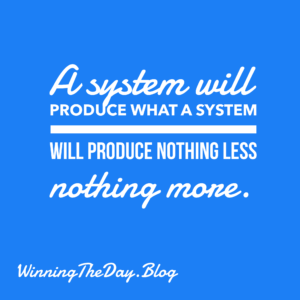We all experience fear. It’s a natural human emotion, a primal response to perceived threats ingrained in us since the dawn of humanity. But while fear can be a powerful protector, keeping us safe from genuine danger, it can also be a crippling obstacle, holding us back from pursuing our goals and living a fulfilling life.
This blog post delves into the complex nature of fear, offering insights and strategies to help you transform fear from a barrier into a catalyst for growth.
From Expectation to Appreciation: A Mindset Shift
Often, our fears are rooted in unmet expectations. We fear failure, rejection, or loss because we’ve attached our happiness to specific outcomes. This creates a rigid framework where anything less than perfection feels like a catastrophe. But what if we could shift our perspective, replacing expectations with appreciation?
Imagine approaching challenges with a sense of gratitude, focusing on the opportunity for growth and learning, rather than the fear of failure. This shift in mindset can be incredibly empowering, allowing you to embrace uncertainty and approach challenges with a sense of curiosity and excitement. Think of it like this:
every “failure” is simply a stepping stone towards success, providing valuable lessons and insights along the way.
The Two Sides of the Coin: Achievement and Fulfillment
From my experience, to truly conquer fear, we need to cultivate two essential skills:
- The Science of Achievement: This involves setting clear, measurable goals, developing effective strategies, and taking consistent action. It’s about mastering the practical skills and knowledge needed to succeed. Think of this as the “external” game – the tangible steps you take to move forward.
- The Art of Fulfillment: This involves cultivating inner peace, gratitude, and a sense of purpose. It’s about finding joy in the journey, regardless of the outcome. This is the “internal” game – cultivating a mindset that supports your growth and allows you to find meaning in your pursuits.
By mastering both the science of achievement and the art of fulfillment, we can approach challenges with confidence and resilience, knowing that we have the tools and mindset to navigate any obstacle. It’s about finding balance between striving for success and finding contentment in the present moment.
Decoding Fear: Understanding Its Various Forms
Fear is not a monolithic entity. It manifests in different ways, depending on the source and the individual. Some common types of fear include:
- Fear of Failure: This fear can paralyze us, preventing us from taking risks and pursuing our dreams. It whispers doubts in our ears, convincing us that we’re not good enough.
- Fear of Rejection: This fear can make us hesitant to connect with others, leading to isolation and loneliness. It makes us question our worthiness of love and belonging.
- Fear of the Unknown: This fear can keep us stuck in our comfort zones, preventing us from exploring new possibilities. It thrives on uncertainty, making us cling to the familiar.
Recognizing the specific type of fear you’re experiencing is crucial in developing effective strategies to overcome it. By naming your fear, you take away some of its power.
Fear and Faith: Two Sides of the Same Coin?
It’s often said that fear is the opposite of faith. But this is a simplistic view. The true opposite of faith is unbelief, a lack of trust in something greater than ourselves. Fear, on the other hand, is simply an emotion, a natural response to perceived threats.
Faith, in this context, is not necessarily religious in nature. It can be a belief in your own abilities, a trust in the process, or a conviction that things will ultimately work out for the best. It’s the courage to step into the unknown, even when fear is present.
Fear as a Stepping Stone to Courage
Without fear, there would be no need for courage. Courage is not the absence of fear, but the willingness to act in spite of it. It’s the ability to face our fears, assess them, and then choose the appropriate action.
Think of fear as a signal, alerting you to potential challenges or dangers. By acknowledging the signal, you can then gather information, assess the situation, and decide how to proceed. This process, in itself, is an act of courage.
Facing Fear: The Path to True Resilience
Ignoring our fears doesn’t make them disappear. In fact, it often amplifies them, allowing them to fester and grow in the shadows of our minds. The key to overcoming fear is to face it head-on.
This means acknowledging our fears, understanding their source, and then choosing how to respond. It might involve seeking support from friends, family, or a therapist, developing coping mechanisms like mindfulness or meditation, or simply taking a deep breath and stepping forward.
By facing our fears, we not only build resilience but also cultivate courage and faith. We learn that we are capable of handling challenges, and that even in the midst of fear, we can find strength and peace.
Moving Forward: Embracing the Journey
This blog post has explored the multifaceted nature of fear, offering insights and strategies to help you transform fear from a barrier into a catalyst for growth. Remember, fear is a natural part of the human experience. It’s how we respond to fear that determines whether it controls us or empowers us.
By shifting our perspective, cultivating essential skills, and facing our fears head-on, we can unlock our true potential and live a life of courage, resilience, and fulfillment.





